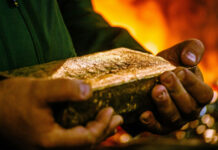
[miningmx.com] — IT’S not that the mining industry has changed for good, but Anglo American’s restructuring proposal may be some acknowledgment by the South African firm that the current strong demand for commodities was expected to continue for much longer than it anticipated.
Anglo has been the most bearish of all the diversified listed mining stocks in London regarding the commodity market. It suggested the commodity demand may flatten as early as 2004 contrasting China’s growth trajectory report against fears that leading indicators for the OECD anticipated a slowing in industrial output.
As recently as August, Anglo American CEO, Tony Trahar, commenting on the commodity market said: “I hesitate to say stronger for longer, but demand will be strong for the foreseeable future’. And asked whether he’d been premature in taking this position, he qualified his outlook: “Cyclical peaks can continue for a while’.
Early indications that China would continue to fuel commodity demand became more obvious in June when the China National Statistical Agency said in its website that investment in that country was 26.4% higher for January to May at $238bn. This compared to 25.7% improvement in the first four months. So growth in China was accelerating.
In the light of Anglo’ strategic position, its paper and packaging firm, Mondi, was intended to provide Anglo’s shareholders with insurance for when the commodity cycle corrected. Contrast this against BHP Billiton’s investment in oil, however. It similarly sought so-called contra-cyclicality to “mining’, and was far racier in its selection.
So it’s clear that Anglo American’s market outlook, its strategic position, coupled with its exposure to South Africa with its political intrigue and new sometimes confusing legislation, made it the less preferred mining counter.
In addition, the constricting effects of the rand on earnings where other mining companies were making hay, has meant Anglo has been less able to keep stride with capital management decisions of other firms. At Anglo’s half-year results, Trahar could only hint at the prospect of a share buy-back or special dividend where other firms had completed them.
Sluggish, constrained and unsuitably diversified, Anglo American has duly underperformed all its peers since its 1999 listing in London.
Now, however, the focus falls squarely on the meat and veg of Anglo’s long-standing core offering: platinum, diamonds, base metals. What’s strange, however, is that Trahar seems willing to swap his company’s investment in gold with a larger stake in platinum. That seems to be the outcome after having expressed today an interest in the possibility of buying more shares in Anglo Platinum while releasing its grip over AngloGold Ashanti.
Trahar has long been uncertain about gold’s long-term position in the group even as gold attempts another run at $500/oz. According to sources, he was only just persuaded to keep AngloGold as a subsidiary soon after taking the helm from Julian Ogilvie Thompson in July, 2000. Moreover, the decision to reduce the holding in AngloGold must be a relatively fresh one.
Soon after the dilutory effects of AngloGold Ashanti’s purchase of Ashanti Goldfields in 2003, Anglo American opted to exercise its rights in taking its interest in the enlarged gold unit back to 51%. One wonders whether there’s a specific deal in mind that AngloGold needs shares.
Trahar himself must be feeling some heat. The potential listing of Mondi, after Trahar decided to keep it within the group, the sale of the industrial interests such as Highveld & Vanadium, after Trahar accumulated shares in the company, are all significant about turns of decisions he made.
Fund managers may ask whether they should believe Trahar has got this restructuring plan correct after leading the group in a quite different direction previously.











